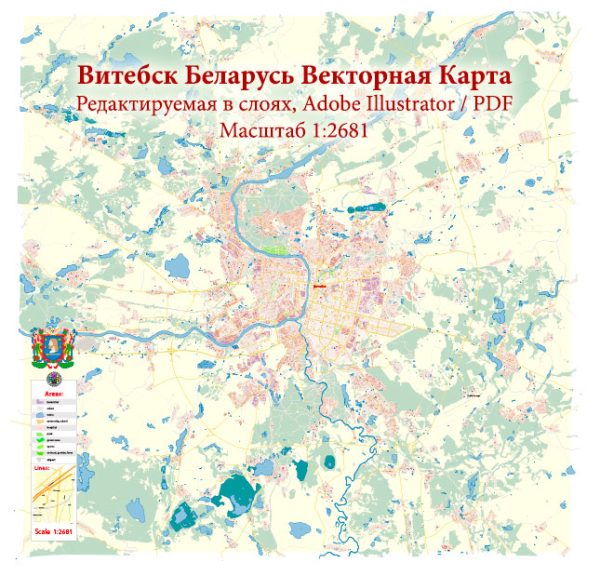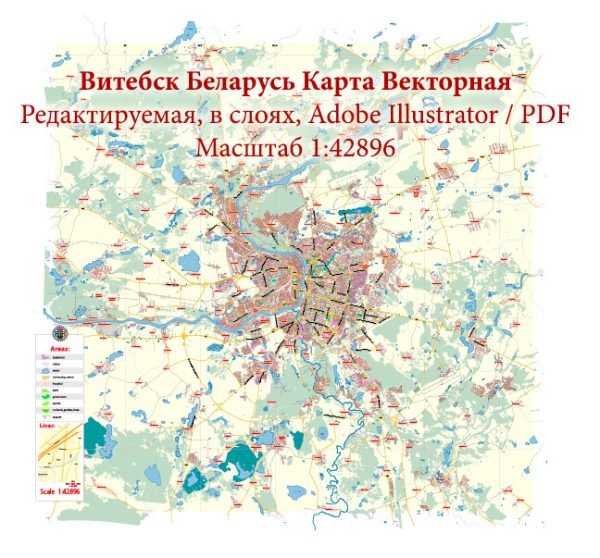Vitebsk, located in northeastern Belarus, has a rich history that spans many centuries. The city’s urban development has been shaped by its strategic location, cultural influences, and historical events. Here is an overview of key phases in the history of Vitebsk’s urban development:
Early History:
- Medieval Origins:
- Vitebsk’s history dates back to the 10th century, and it became a part of the medieval Duchy of Polotsk. Its location on the Vitba River contributed to its role as a trade and cultural center.
- Lithuanian and Polish Rule:
- In the late medieval period, Vitebsk was under the rule of the Grand Duchy of Lithuania and later the Polish-Lithuanian Commonwealth. The city’s development was influenced by Polish cultural and architectural trends.
Russian Empire:
- Russian Imperial Era (18th – 19th Centuries):
- Vitebsk came under Russian rule in the late 18th century as a result of the partitions of Poland. The city became part of the Russian Empire and experienced economic and administrative changes.
- Cultural and Artistic Hub:
- In the early 20th century, Vitebsk gained prominence as a cultural and artistic hub. It was home to the avant-garde art movement, particularly the art school founded by Marc Chagall in 1918.
Soviet Period:
- Bolshevik Revolution and Soviet Rule:
- The Bolshevik Revolution of 1917 led to the establishment of Soviet rule. Vitebsk became part of the Soviet Union, and its urban development was influenced by socialist and industrialization policies.
- World War II:
- Vitebsk suffered significant damage during World War II, especially during the German occupation. The city played a role in the Eastern Front, and its reconstruction post-war was a significant endeavor.
Contemporary Belarus:
- Post-Soviet Independence:
- With the dissolution of the Soviet Union in 1991, Belarus gained independence. Vitebsk became a part of the newly independent Republic of Belarus.
- Preservation of Heritage:
- Vitebsk has worked to preserve its historical and cultural heritage. The city’s historic center features buildings from different periods, including churches, museums, and monuments.
- Economic Changes:
- The post-Soviet era brought economic changes to Vitebsk. The city has seen efforts to diversify its economy, with a focus on industry, trade, and services.
- Cultural Events:
- Vitebsk hosts cultural events that attract visitors from Belarus and beyond. The city is known for the International Festival of Arts “Slavianski Bazaar,” which celebrates Slavic culture.
- Education and Research:
- Vitebsk is home to educational and research institutions, contributing to the intellectual and cultural life of the city. Vitebsk State Medical University and Vitebsk State Technological University are notable examples.
- Transportation and Infrastructure:
- Transportation infrastructure, including roads and railways, plays a crucial role in connecting Vitebsk with other parts of Belarus and neighboring countries.
Challenges and Opportunities:
- Urban Planning Challenges:
- Like many cities, Vitebsk faces challenges related to urban planning, infrastructure maintenance, and ensuring a balance between historical preservation and modern development.
- Tourism Potential:
- Vitebsk has the potential to attract more tourists due to its historical significance and cultural events. Efforts to promote tourism can contribute to the city’s economic development.
Vitebsk’s urban development is a testament to its resilience and adaptability throughout various historical periods. The city’s cultural heritage, artistic contributions, and efforts to modernize while preserving its historical character contribute to its unique identity within Belarus.



 Author: Kirill Shrayber, Ph.D.
Author: Kirill Shrayber, Ph.D.